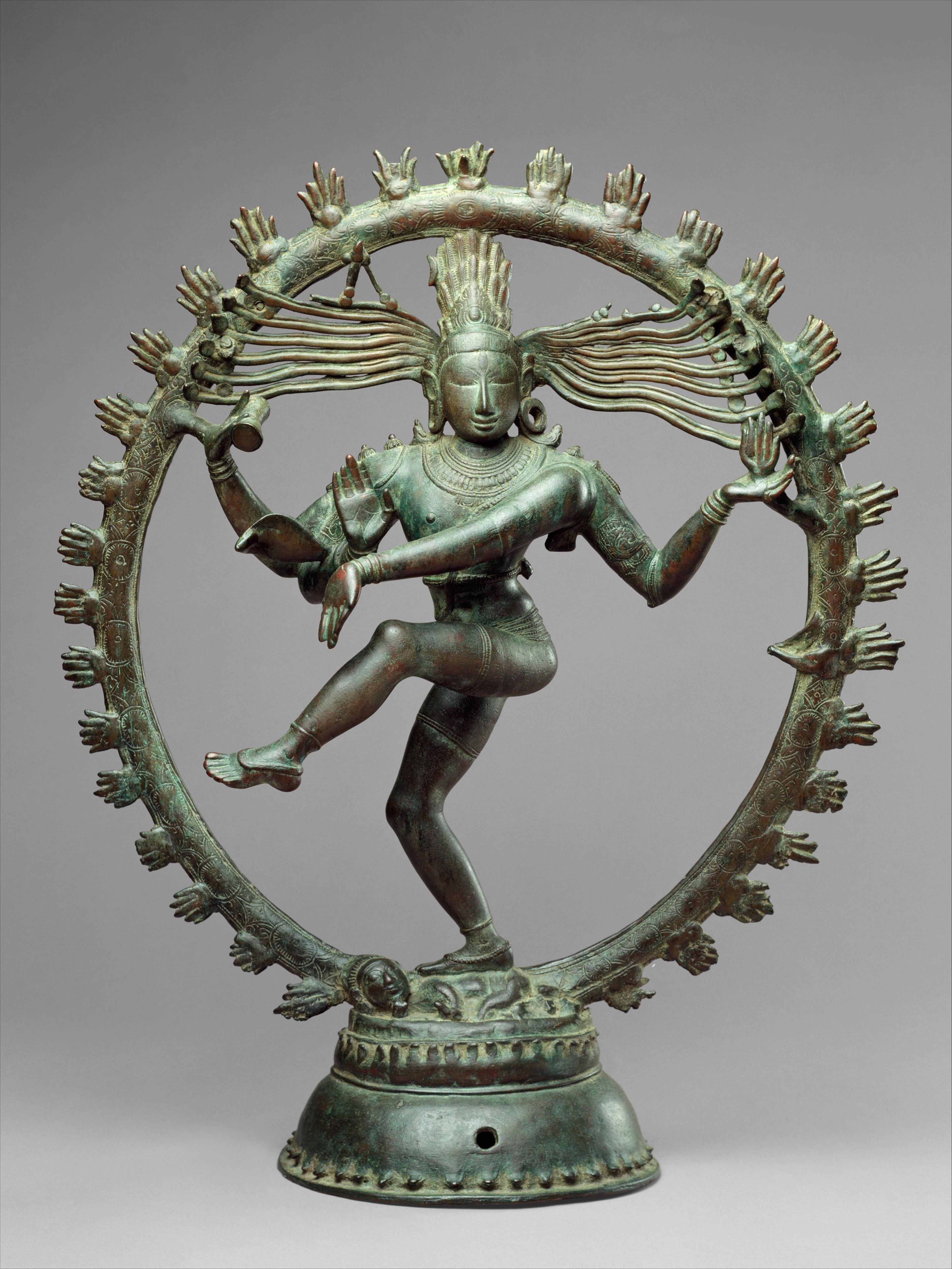
Shiva as Lord of Dance (Nataraja), ca. 11th century. Indian (Tamil Nadu). Copper alloy, 26 7/8 x 22 1/4 in. (68.3 x 56.5 cm). The Metropolitan Museum of Art, Gift of R. H. Ellsworth Ltd., in honor of Susan Dillon, 1987 (1987.80.1)
I don't have to believe in the Shiva, but I cannot ignore what this object was meant to be.
My name is Izhar Patkin. I'm a painter and sculptor.
In 1977 I first came to New York from Israel. Coming from a culture that doesn't have religious images, your first encounter with those images that often represent not just deep faith, but also power, is very unsettling.
A friend of mine was very sensitive to my dilemma. He came to me and he said, "There's something I'd like you to do: make me a Shiva." And I said, "Why?" and he said, "Well that's the lesson I want you to learn."
I ended up making a Shiva sculpture in its dancer Nataraja posture, and mixed it with Josephine Baker, Carmen Miranda. It was all done in Murano glass: very seductive, very transparent. Once it was done I called up Pedro and he came and I said, "What do you think of my Shiva?" And he said, "You got it now! You learned the lesson I wanted you to learn." And I said, "Well what was that?" And he said, "What did you leave out?" And I said, "The word 'sculpture.'"
And this was very profound because the statue of Shiva the god is not a representation for the believer or an abstraction of the idea. It is a manifestation of the god, so the statue is the god. It's a statue of opposites: of destruction and rebirth, of stillness and of movement. Here I found myself being the vessel of an idea that did not have to do anything with my beliefs.
Walking into this dark room, all these sculptures are made to look like spirits. The rebellious side of me says, "I don't buy it," but if you look carefully you will see in the cracks of the pedestal somebody inserted coins as an offering to the gods. There's something so fantastically transgressive there. It's like, we don't care we're in this museum, we don't care that you are here to present it as some historical piece, we don't care if this is from whatever century: this is my god, and I'm making the offering. This is a whole other relationship to the object of art. I don't have to believe in the Shiva, but after being in that moment of manifestation my relationship to all other statues have been touched by it. I cannot ignore what this object was meant to be.
I have learned that the things I resist the most are probably the things I should study the most. It's often a good sign that there's a lot to be learned there. I see today that the role of an encyclopedic museum cannot be underestimated. It's the one place that requires tolerance as the first rule of entering the institution.